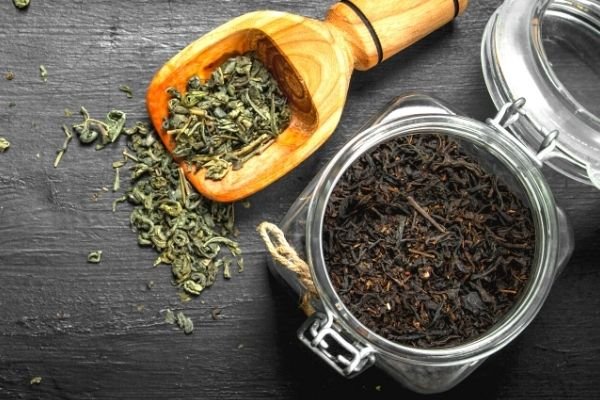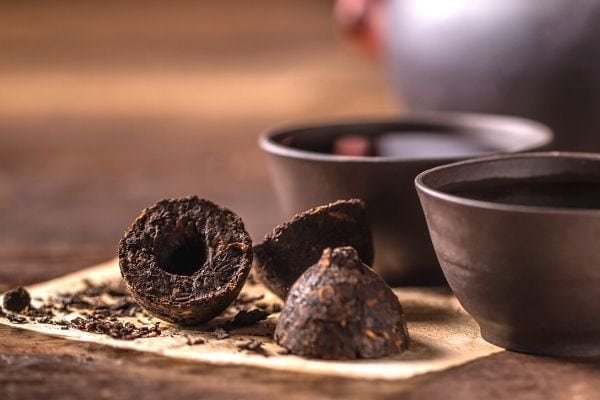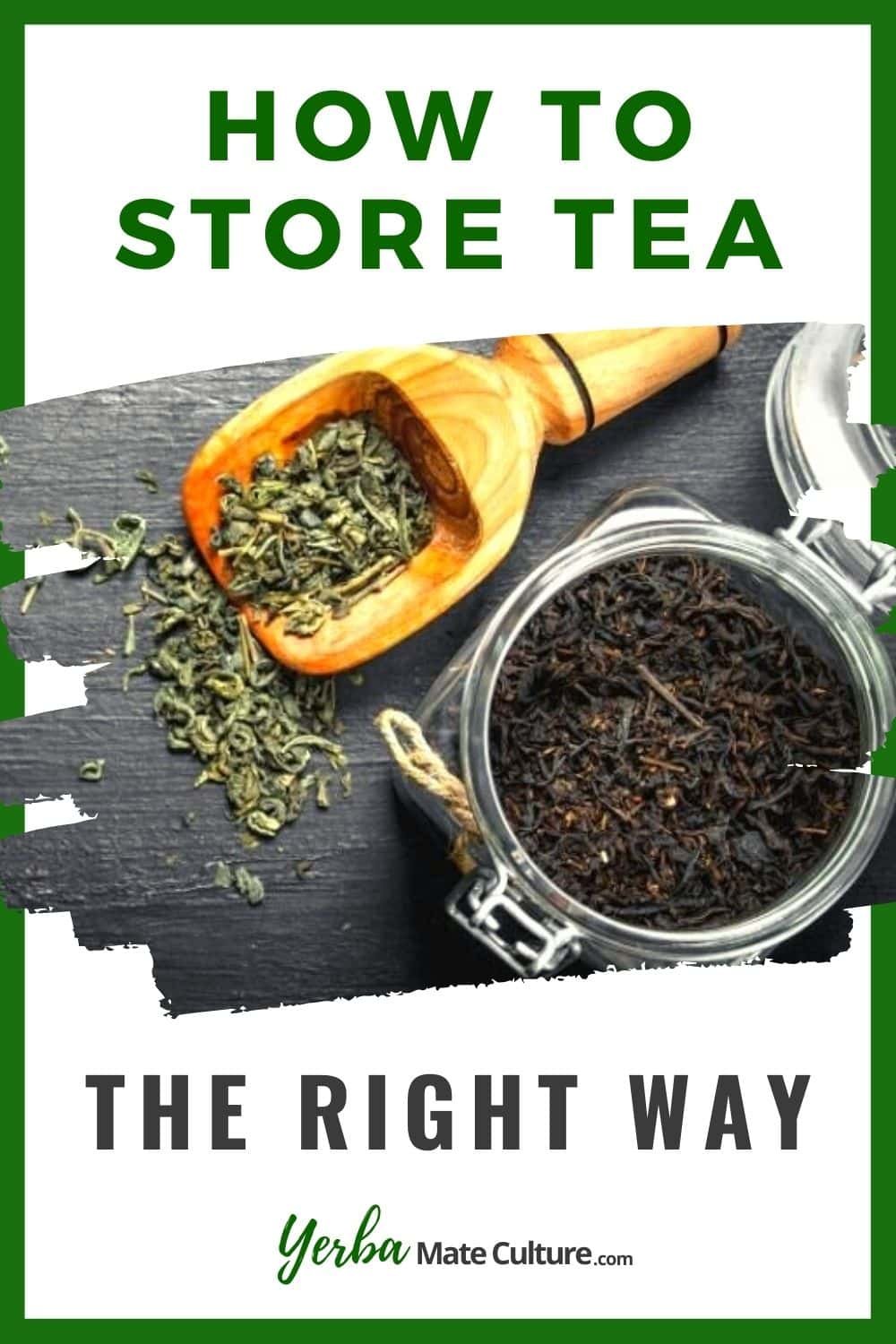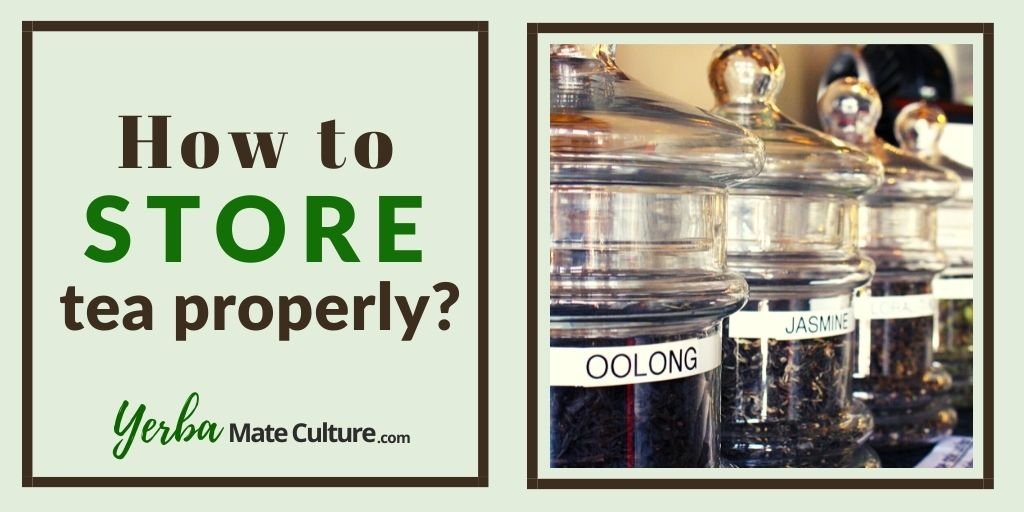Many people assume that tea can’t go bad because it’s not a “food.” Others believe that tea can stay fresh indefinitely because it’s a dry good. But the truth is a bit complicated.
While most teas do have long shelf lives, no tea is immortal. It is true that people in places like China and India routinely drink teas that are 20, 30, or even 40 years old. That doesn’t mean that the pouch of loose tea you purchase at the local grocery store is intended to become an heirloom you can pass on to your grandchildren.
This is where knowing how long different types of teas can stay fresh becomes helpful. It’s even more important to know some tips for storing tea for optimal freshness.
You can’t play it fast and loose when it comes to storing your precious tea. Proper storage is essential for freshness, flavor, and safety.
Let’s take a deeper look at everything you need to know about how to store loose leaf tea.

Does Tea Expire?
Most loose teas that you purchase don’t actually have expiration dates on them. It can be impossible to know what a tea’s sell-by date is if you’ve purchased a bag of loose tea.
However, the truth is that tea does technically expire. This is why it’s important to look for products that display the “picked on” date.
Most dried tea leaves will not spoil when they are kept dry, and stored away from heat, light, and air. The flavor and beneficial antioxidants and other nutrients can be maintained for up to two years.
Teas that are more fermented will last longer. In addition, batches of loose leaf tea with intact dried leaves will actually last longer than batches with broken leaves.
There are several things to know about how and why tea expires. The good news is that the biggest harm that comes from “stale” tea in most cases is a bland flavor. Oxygen and light exposure can both cause the tea to slowly oxidize. This dries out the leaves to create a very stale, flavorless tea.
It’s also possible for tea to grow mold if it isn’t stored in the right conditions. Tea that is exposed to moisture and heat can officially turn “bad” by forming mold. Unfortunately, this can make you sick.
How Long Can Tea Be Stored?
Black Tea: Fully oxidized, most black tea leaves are good for about two years. High-quality black tea leaves can often linger even longer without losing freshness.
Pu-Erh Tea: This tea technically never expires because it is a fermented aged tea. However, the wrong conditions can create mold that makes the tea unusable. Be sure to do a taste test every few years if you plan on stocking up on Pu-Erh.
Oolong Tea: While green oolongs will stay delicious for a full year, roasted varieties are good for about two years. People who are serious about their teas can find special age-resistant oolong varieties that are actually designed to stay good for decades in a way that’s similar to wines getting better with age.
Green Tea: Largely unoxidized, green tea is the quickest to spoil on the list of teas. While high-quality green can stick around on the shelf for a year, most green teas begin to lose their luster within six months.
White Tea: Like Pu-Erh, the best white teas technically don’t expire. In fact, many tea aficionados enjoy the way that the flavor profile of white tea changes the longer it stays on the shelf. White tea starts off with a sweet and floral flavor. It then becomes darker before taking on what is described as a cool, spiced flavor profile. The beautiful aging is typically only enjoyed if you’re purchasing a high-end white tea. Most commercial white teas should be consumed within a year for the best flavor.
Herbal Tea: Herbal teas can be particularly vulnerable to mold because some contain sweet, fruity elements. Herbal teas should be consumed within 6 to 12 months.
Main Principles of Loose Leaf Tea Storage
There are some basic storage rules to follow to preserve the freshness of your loose leaf tea.
While you may be tempted to keep your tea stored on a kitchen countertop for easy access, this can cause your tea to degrade prematurely. Of course, you also want to be sure that your teas aren’t hidden away so deeply that you forget to enjoy them while they’re still exhibiting peak flavor.
1. Air
Air is the enemy of tasty tea. Thus, an airtight container is ideal for storing loose teas.
Oxygen hitting tea causes it to become hard and stale. Letting air hit your tea leaves is the surest way to zap flavor.
Tea containers made from tin and ceramic are considered ideal for loose leaf tea. Glass is also a great option if the container will be kept away from light. All of these materials are good for creating a tight seal while resisting moisture.
Wooden tea boxes are not ideal for loose leaf tea due to moisture concerns.
2. Humidity
Keep tea away from moisture.
Unfortunately, even “forever” teas that have been aged to last for years can expire if they are exposed to moisture because mold can form.
Moldy tea can make you sick. Places like basements and garages are not ideal for tea storage.
3. Temperature
Both heat and cold can damage tea quality.
First, heat will cause chemical reactions within the tea leaves that impact flavor. Cold temperatures can easily create condensation that will invite mold.
4. Sunlight
Tea should be stored away from sunlight.
Ultraviolet (UV) rays actually break down chemical components in tea. In addition to changing the color of tea leaves, sunlight exposure can produce a very unpalatable metallic flavor.
5. Smells
Tea leaves can absorb the smells around them if they aren’t stored in a tightly sealed container. While odor absorption doesn’t necessarily cause teas to go bad, it can dramatically alter your flavor perception to create a diminished tea-drinking experience.
Keep loose leaf teas out of spice cabinets and any other areas with strong odors to avoid flavor contamination.
How to Store Pu Erh Tea
There’s a little bit of an exception with Pu-Erh tea simply because this variety is an aged tea.

However, some of the same rules for creating an optimal flavor experience still apply with this timeless tea.
The biggest exception is that air is actually a flavor enhancer for Pu-Erh tea.
So don’t seal Pu-Erh too tightly!
Keeping Pu-Erh stored at a consistent temperature of around 65 degrees Fahrenheit to 74 degrees Fahrenheit is ideal. This tea also does wonderfully when humidity is between 40 percent and 60 percent.
Keep in mind that Pu-Erh tea can still get moldy even though it continues aging beautifully with some air exposure. It can also absorb odors.
How to Store Loose Leaf Tea vs Tea Bags
Does loose leaf tea need to be stored differently from tea bags? And do tea bags go bad?
The answer depends on how your tea bags are secured.
Tea bags that come individually wrapped in plastic are more forgiving because they have built-in protection against air and sunlight. They can even be placed in wood, plastic, or ceramic “tea drawers” that you keep on a kitchen countertop.
Uncovered tea bags need extra protection. In fact, moving those tea bags from their original boxes to airtight containers can be wise.
All of the same factors that diminish the flavor and quality of loose leaf tea can harm bagged teas. Follow all of the same principles for storage to reduce exposure to air, moisture, sunlight, and other flavors.
Final Thoughts on How to Store Tea for Freshness
Getting the best results from loose leaf tea starts by investing in high-quality tea.
Next, you’ll want to protect your investment by making sure that your tea is being stored away from air, light, moisture, and odors that accelerate chemical changes that rob tea of flavor. Any loose leaf tea that becomes wet during storage should be discarded.
Finally, keep track of the dates you bring home tea by marking each bag.
And, of course, you still need to brew the tea. Check out our guide with the best loose leaf tea infusers and you are ready to go!
Save on Pinterest:






